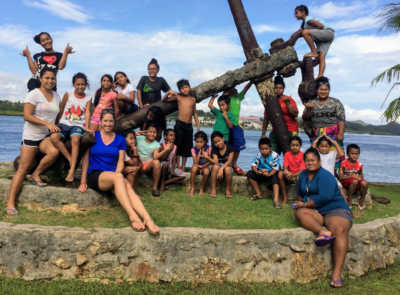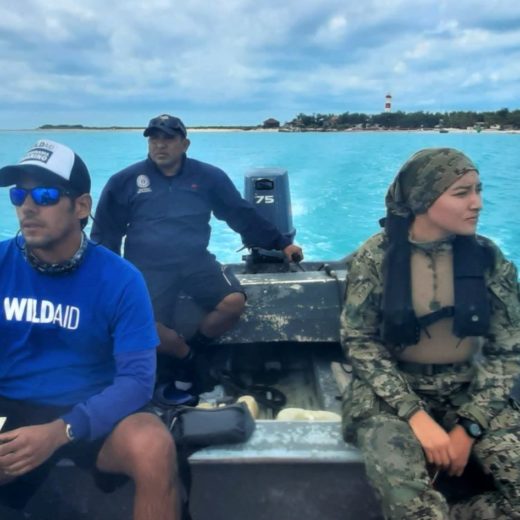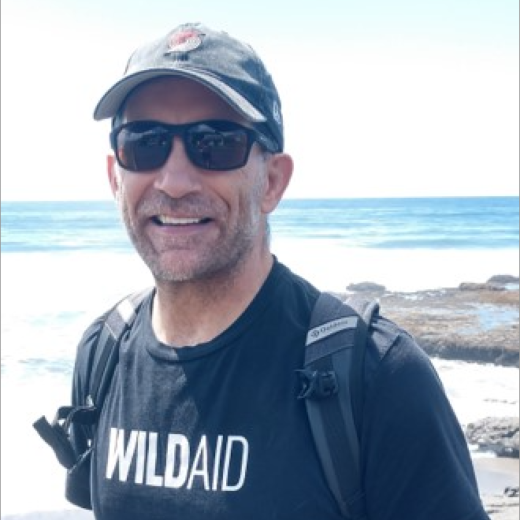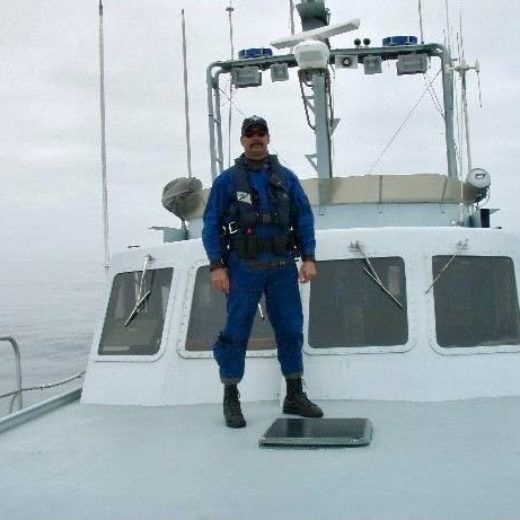
Once a year, we come together as a global community to formally celebrate women’s achievements and empower and uplift the women of the world. In honor of International Women’s Day and Women’s History Month, WildAid Marine is launching a series that will highlight some of the amazing women behind the scenes of the conservation work we do. We hope their stories will empower and inspire our community to celebrate women’s achievements, rally for gender equity, and bring awareness to the important work of marine conservation.
Molly Shane, Marine Program Officer
What started as an intense passion for wildlife and nature at a young age evolved into Molly’s career in conservation. From tracking leopards in South Africa to conducting game counts in Botswana, Molly experienced firsthand what it takes to protect wildlife. These experiences highlighted the inextricable connections between humans and the natural world. Molly came to understand that when animals and natural resources are protected, the communities those resources serve can thrive. Today, Molly’s work focuses on supporting WildAid Marine and the capacity-building work they do to train, guide, and mentor local conservationists to protect their marine resources and benefit economically.
This year, more than ever, Molly’s work has consisted of behind-the-scenes communications and fundraising. While not always as exciting as fieldwork, the office-based work Molly does is crucial for communicating WildAid Marine’s impact to partners, donors, and local communities. For example, in January 2021, the team celebrated the first successful hatching of a leatherback sea turtle nest in Ecuador in over 40 years. This achievement is a testament to the work WildAid Marine, the Ecuadorian government, and local communities have done to protect this highly endangered species. While it can be hard to see the big picture progress, Molly remains hopeful by telling stories like these and remembering that “the small, little things will add up and that’s how change happens.”
What do you do for WildAid Marine?
I work as a Program Officer for WildAid Marine. In my role, I manage Communications for the Marine team and support individual fundraising efforts and other programmatic needs. The work that we do to strengthen marine enforcement and protection is complex, so a big part of my job is figuring out how to tell our stories in impactful, evocative ways that help our supporters understand what we do. Whether we’re talking about the boring-but-important stuff (safety trainings, capacity building, standard operating procedures) or the new, flashy, exciting stuff (conservation drones, fisheries mobile apps, satellite monitoring), I help bring our work to life. In addition, I strive to tell the stories of the incredibly diverse array of partners we work with, from government agencies to park rangers to fishing cooperatives. With our support, these partners are doing the hard work of figuring out how to actually implement protections in marine areas and reserves.
What first got you interested in oceans? Was it a documentary? A book? A friend?
My mother is a marine biologist who studied dolphins, whales, and manatees throughout her career. She instilled in me a deep sense of awe and respect for the oceans and the creatures that call them home. Growing up, I had the opportunity to visit many of the places that she and her colleagues had done their research – Sanibel Island, FL; Catalina Island, CA; Belize; Hawaii. Seeing these remarkable places firsthand inspired me but seeing the devastation that humans were causing, whether it was a manatee suffering from a boat strike or a lifeless, bleached coral reef, motivated me to work to protect our oceans. I knew I wanted my future children to experience the wonder of snorkeling on a coral reef and that was clearly not something I could take for granted.
How did your career in conservation start?
Since high school, I knew I wanted to work in the field of wildlife conservation and, like many, my journey started as an intern. During college, I interned with African Wildlife Foundation and the Sierra Club. I then studied abroad in Botswana with Round River Conservation Studies where I honed my focus on community-based conservation and reinforced my belief that conservation must be just, equitable, and inclusive if we hope for long-term success. Later, I received a Master’s in International Environmental Policy with a focus on Ocean and Coastal Resource Management. Drawing on my academic background in Sociology / Anthropology and my professional experience in marketing and communications, I found a niche working on education, outreach, and communications in the conservation field.
What is one thing about your job or the work you do that might surprise people?
While many jobs in the field of environmental and wildlife conservation are field-based, there is also a lot that happens behind the scenes to support the people in the field. Even though I work on ocean conservation, I spend my days behind a computer screen just like everyone else. Sometimes the work is not as glamorous as it seems!
What gives you hope for the future of our oceans?
There is now such a profound, collective awareness of the threats facing our oceans and the implications of what that means for us as a species. We’ve seen what happens when the sea level rises, when the coral reefs bleach, when the plastic piles up on our beaches, when fisheries are pushed past their limit, when hurricanes are more frequent and intense. More people than ever understand that if we do not care for our ocean, it will no longer be able to feed us, provide us with jobs and recreation opportunities, or support the countless magnificent species that call the ocean home. I think that people finally understand that protecting the ocean and managing its resources sustainably over the long-term is better for all of us and I am hopeful that this will drive meaningful action.
If you could tell your younger self one thing, what would it be?
Working in the field of conservation is complex and challenging and sometimes progress is so slow you’ll wonder if you’ve made any impact at all. But remember, protecting our world’s ecosystems and species and ensuring an equitable, sustainable future for all is no small feat. We will struggle, we will fail, we will adapt, and we will try again. Be sure to celebrate all the small wins along the way because, added together, these small changes will lead to a more sustainable existence for future generations.
What is your advice for young women trying to go into conservation?
There are so many different career paths within the field of conservation. My advice is to try out as many paths as possible to figure out which resonates with you and allows your strengths to shine through. You could do field research, communications, fundraising, outreach and education, to name a few. You could be based in a big city or you could live abroad in a rural research camp. You could work as part of a team or spend your days alone in the field doing research. Find internships, fellowships, or jobs that allow you to test out these different paths and then figure out what steps you need to take to get a job that allows you to do more of what you love.


Stay in touch and get the latest WildAid updates.
SIGN UP


